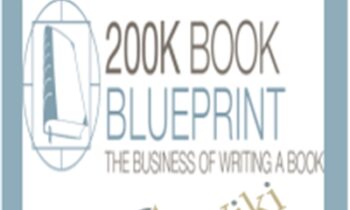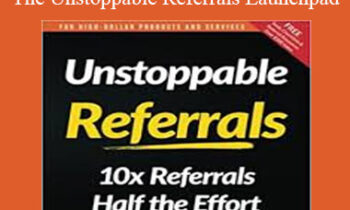-
×
 2-Day: Medical Screening and Differential Diagnosis Intensive Training Course - Shaun Goulbourne
4 × $180.00
2-Day: Medical Screening and Differential Diagnosis Intensive Training Course - Shaun Goulbourne
4 × $180.00 -
×
 Make 'Em Laugh & Take Their Money - Dan Kennedy
1 × $17.00
Make 'Em Laugh & Take Their Money - Dan Kennedy
1 × $17.00 -
×
 Ethical Principles in the Practice of Rhode Island Mental Health Professionals - Allan M. Tepper
3 × $84.00
Ethical Principles in the Practice of Rhode Island Mental Health Professionals - Allan M. Tepper
3 × $84.00 -
×
 2-Day Certificate Training in Cognitive Behavioral Interventions for High-Functioning Autism: Improve Social Skills, Mood and Challenging Behaviors in Children, Adolescents & Young Adults - Cara Marker Daily
1 × $124.00
2-Day Certificate Training in Cognitive Behavioral Interventions for High-Functioning Autism: Improve Social Skills, Mood and Challenging Behaviors in Children, Adolescents & Young Adults - Cara Marker Daily
1 × $124.00 -
×
 2017 Food Revolution Summit Empowerment Package – Ocean Robbins
1 × $34.00
2017 Food Revolution Summit Empowerment Package – Ocean Robbins
1 × $34.00 -
×
 8th Annual Tapping World Summit 2016
2 × $49.00
8th Annual Tapping World Summit 2016
2 × $49.00 -
×
 Advanced Strength and Power - Dan Baker
1 × $42.90
Advanced Strength and Power - Dan Baker
1 × $42.90 -
×
 3-Day: Vestibular Rehabilitation Intensive Training Course - Jamie Miner
1 × $244.00
3-Day: Vestibular Rehabilitation Intensive Training Course - Jamie Miner
1 × $244.00 -
×
 Spontaneous Transformation - Jennifer McLean
1 × $92.00
Spontaneous Transformation - Jennifer McLean
1 × $92.00 -
×
 $200k Book Blueprint Training – Richelle Shaw
3 × $96.00
$200k Book Blueprint Training – Richelle Shaw
3 × $96.00 -
×
 Effective Rehab Strategies for Progressive Neurological Disorders - Michel Janet (Shelly) Denes
1 × $84.00
Effective Rehab Strategies for Progressive Neurological Disorders - Michel Janet (Shelly) Denes
1 × $84.00 -
×
 Hypnotic Workers & Hypnotic Business Systems - Jason Linett
1 × $133.00
Hypnotic Workers & Hypnotic Business Systems - Jason Linett
1 × $133.00 -
×
 10 Activities to Enhance Social-Emotional Literacy in the Classroom: Transform Student Behavior from Chaos to Calm - Lynne Kenney
1 × $19.00
10 Activities to Enhance Social-Emotional Literacy in the Classroom: Transform Student Behavior from Chaos to Calm - Lynne Kenney
1 × $19.00 -
×
 10 Steps to Greater Confidence and Self-Esteem - Alexis Meads
1 × $42.00
10 Steps to Greater Confidence and Self-Esteem - Alexis Meads
1 × $42.00 -
×
 Managing Geriatric Behaviors: Wandering, Aggression, Malnutrition and More - Steven Atkinson
1 × $35.00
Managing Geriatric Behaviors: Wandering, Aggression, Malnutrition and More - Steven Atkinson
1 × $35.00 -
×
 "True Bee" Sittepute - Kru Bee Clinch Wizard - Kru Moonkondech
3 × $25.00
"True Bee" Sittepute - Kru Bee Clinch Wizard - Kru Moonkondech
3 × $25.00 -
×
 10,000 Royalty Free Photos - Alun Hill
1 × $195.00
10,000 Royalty Free Photos - Alun Hill
1 × $195.00 -
×
 5 Proven Ecommerce Scaling Tactics
1 × $49.00
5 Proven Ecommerce Scaling Tactics
1 × $49.00 -
×
 21 Day Inner Healing Journey - Jimmy Evans
1 × $20.00
21 Day Inner Healing Journey - Jimmy Evans
1 × $20.00 -
×
 "Male Physique Training Templates" - Renaissance Periodization
1 × $42.00
"Male Physique Training Templates" - Renaissance Periodization
1 × $42.00 -
×
 2-Day Advanced Course: Executive Functioning Skills for Children & Adolescents...- Lynne Kenney
1 × $180.00
2-Day Advanced Course: Executive Functioning Skills for Children & Adolescents...- Lynne Kenney
1 × $180.00 -
×
 Scalping Dow Jones 30 (DJI30) course – Live Trading Sessions - ISSAC Asimov
1 × $25.00
Scalping Dow Jones 30 (DJI30) course – Live Trading Sessions - ISSAC Asimov
1 × $25.00 -
×
 10-Minute Spiritual Vortex Clearing - Michael Davis Golzmane
1 × $10.00
10-Minute Spiritual Vortex Clearing - Michael Davis Golzmane
1 × $10.00 -
×
 Advanced Concepts in Cardiovascular Care 2-Day Conference: Day One: Advanced ECG & Arrhythmia Interpretation - Karen M. Marzlin
1 × $85.00
Advanced Concepts in Cardiovascular Care 2-Day Conference: Day One: Advanced ECG & Arrhythmia Interpretation - Karen M. Marzlin
1 × $85.00 -
×
 "Is Your Soul Allowing You To Heal?" -- All 7 Recordings in the Series (6 Hours of Audio Clearings)
1 × $83.00
"Is Your Soul Allowing You To Heal?" -- All 7 Recordings in the Series (6 Hours of Audio Clearings)
1 × $83.00 -
×
 10th Planet Jiu-jitsu All Stars
1 × $27.00
10th Planet Jiu-jitsu All Stars
1 × $27.00 -
×
 12 Dimensions of Mastery (Lifebook Challenge)
1 × $92.00
12 Dimensions of Mastery (Lifebook Challenge)
1 × $92.00 -
×
 1% Better Every Day Strength Building System - Ricky Lundell
1 × $32.00
1% Better Every Day Strength Building System - Ricky Lundell
1 × $32.00 -
×
 30-Day Metabolic Challenge - Vince Del Monte
1 × $42.00
30-Day Metabolic Challenge - Vince Del Monte
1 × $42.00
You may be interested in…
-
Add
 2-Day Training Clinical Hypnosis Certificate Course - Eric K. Willmarth
2-Day Training Clinical Hypnosis Certificate Course - Eric K. Willmarth
$439.99Original price was: $439.99.$180.00Current price is: $180.00. -
Add
 101 Ways to Hypnotize Anyone – Steve G. Jones
101 Ways to Hypnotize Anyone – Steve G. Jones
$37.00Original price was: $37.00.$18.00Current price is: $18.00. -
Add
 2018 12 Daze Bundle - John Overdurf
2018 12 Daze Bundle - John Overdurf
$575.00Original price was: $575.00.$129.00Current price is: $129.00. -
Add
 123 Manifest It - Marlenea Johnson
123 Manifest It - Marlenea Johnson
$735.00Original price was: $735.00.$152.00Current price is: $152.00.

 $200k Book Blueprint Training – Richelle Shaw
$200k Book Blueprint Training – Richelle Shaw  Hypnotic Workers & Hypnotic Business Systems - Jason Linett
Hypnotic Workers & Hypnotic Business Systems - Jason Linett  "True Bee" Sittepute - Kru Bee Clinch Wizard - Kru Moonkondech
"True Bee" Sittepute - Kru Bee Clinch Wizard - Kru Moonkondech  10,000 Royalty Free Photos - Alun Hill
10,000 Royalty Free Photos - Alun Hill  "Male Physique Training Templates" - Renaissance Periodization
"Male Physique Training Templates" - Renaissance Periodization  Scalping Dow Jones 30 (DJI30) course – Live Trading Sessions - ISSAC Asimov
Scalping Dow Jones 30 (DJI30) course – Live Trading Sessions - ISSAC Asimov  "Is Your Soul Allowing You To Heal?" -- All 7 Recordings in the Series (6 Hours of Audio Clearings)
"Is Your Soul Allowing You To Heal?" -- All 7 Recordings in the Series (6 Hours of Audio Clearings) 



 Purchase this course you will earn
Purchase this course you will earn  Matan Feldman – Bank And FIG Modeling
Matan Feldman – Bank And FIG Modeling










